“Mai, tuktumia’tuit!” That means “Wow, look at all those caribou!” (I think… my Inuktitut has not improved after 30 years of inactivity).
It was a cold but sunny morning in late winter, somewhere along the treeline about 100 km west of Arviat, Nunavut. Peter, Joe and I were travelling by snowmobile to conduct a barren-ground caribou classification survey. The way we surveyed caribou, 40 years ago, was to drive our snowmobile up to a group of them—close enough that they would start walking away in a nice line, but not so close that they run. Then we’d train our spotting scope on them and count them off by sex and age (adult male, adult female, calf).
On this morning though, we were having difficulties. We were surveying the Qaminirjuak population, but the particular group we wanted to count had all crowded onto a small hilltop—there were more than 1,000 of them! The attraction was a particularly thick crop of lichen that the caribou were all chowing down on. We drove towards the herd, but there were so many caribou, that instead of walking away, they just flowed around our snowmobiles like water. The animals next to us would try to move away, but they would immediately bump into other caribou that refused to budge. None of them wanted to leave either the lichens or the protection of the herd. In the end, although it was a remarkable experience to see so many caribou up close, we had to abandon that group and go look for smaller groups that were easier to count.
Slow and steady
Count up enough caribou groups and you can come up with a calf-to-cow ratio for the population, which tells you what kind of year it was for reproductive success. Reproductive success is an important piece of information for wildlife managers, because together with mortality, it pretty much defines how well the population is doing. Caribou reproduce slowly—they have only one calf at a time, may not breed every year, and often don’t start breeding until age three—so the balance between caribou reproduction and mortality is always precarious. As discussed in our previous articles, the sustainability of our Jasper caribou herds is intertwined with both elk and wolves, so getting good calf to cow counts is just as important here in Jasper as it is in the arctic.
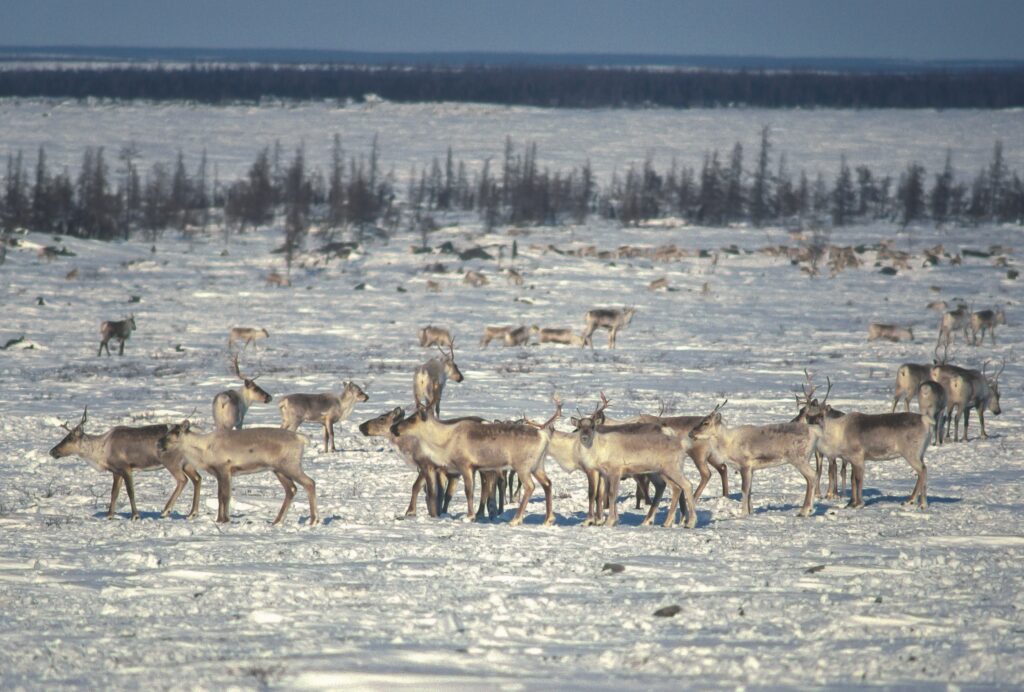
The first caribou, and how the Inuit won the north
Caribou, and reindeer the world over, are all one species: Rangifer tarandus. The earliest North American fossils of caribou were found in Alaska and the Yukon and date to about 1.5 million years ago. It is thought that caribou evolved in Berengia, the area that included eastern Russia, western North America, and the once-dry land in between, which has since become the Bering Sea. After various caribou movements, the end of the most recent ice age (12,700 years ago) saw some caribou move west to become Eurasia’s reindeer, and others move east to become our barren-ground caribou. Our woodland caribou are thought to have survived the last ice age just south of the North American ice sheet.
Amazing adaptations
Caribou belong to the deer family (Cervidae), but as deer go, they are pretty odd. They evolved in the north and never moved south, so unlike other deer, they are adapted to survive in harsh winter conditions. They have long legs and wide hooves which let them walk through deep snow.
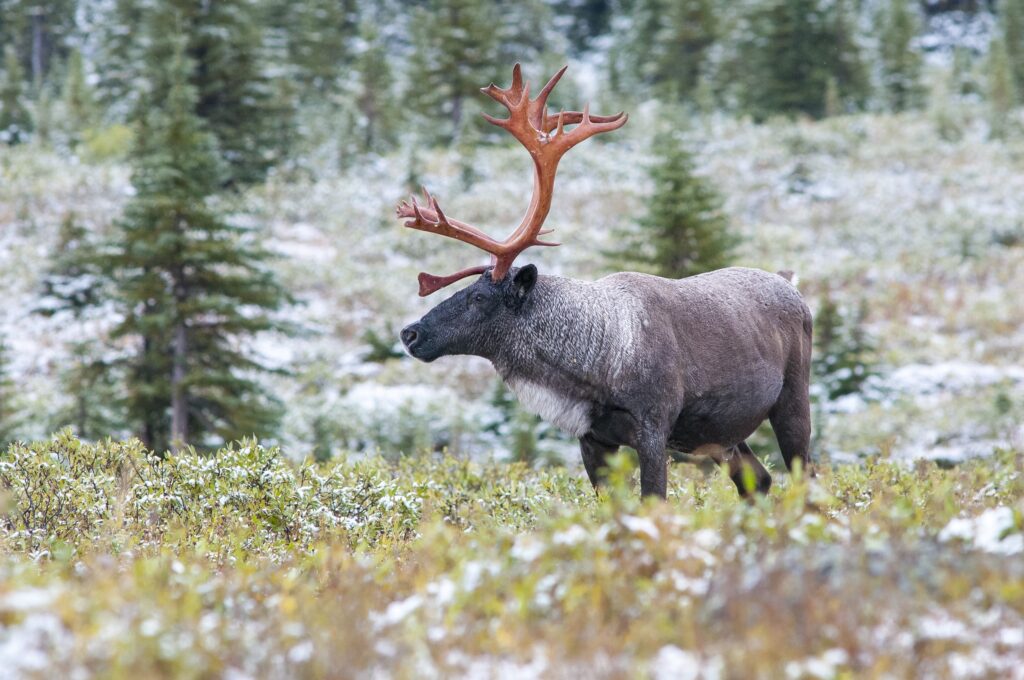
Caribou noses are long and wide, and provide counter-current heat exchange on cold dry air—when a caribou breaths in, the air is warmed in the nose before it hits the lungs. Their legs also have counter-current exchange that keeps their legs cool and their bodies warm (see our piece on Dippers for more detail on this phenomenon). But perhaps their greatest adaptation is the hollow hair that makes up the caribou’s outer coat. This stuff is amazing! I can attest to the insulating properties of caribou fur, because I’ve done winter field work in the arctic, dressed head to toe in caribou skin clothing. I was able to stand outside at -40℃ with a howling wind and keep warm as toast!
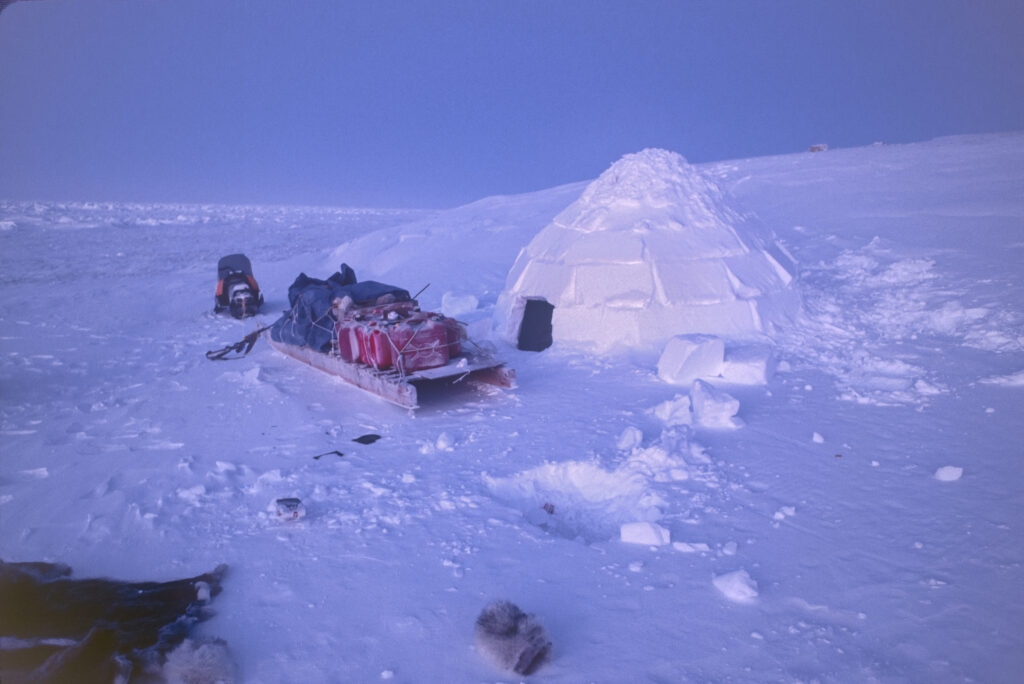
Caribou have always been an essential part of Inuit life. Caribou clothing and sleeping skins are an important part of the Inuit people’s ability to thrive in severe winter conditions and were an important tool in their colonization of Canada’s far north. Caribou meat and fat are also a mainstay of the traditional Inuit diet.
Barren-ground caribou
Although barren-ground and woodland caribou are the same species, there are important differences between the two. Barren-ground caribou weigh only 60 percent of that of woodland caribou, but have proportionally-longer antlers. The two types also have different life strategies: most barren-ground caribou live in very large groups and are almost always migrating—in fact, they only really stop to have their calves. Woodland caribou, on the other hand, have very short migrations (or no migrations at all) and live in small groups, spread out thinly across the landscape.
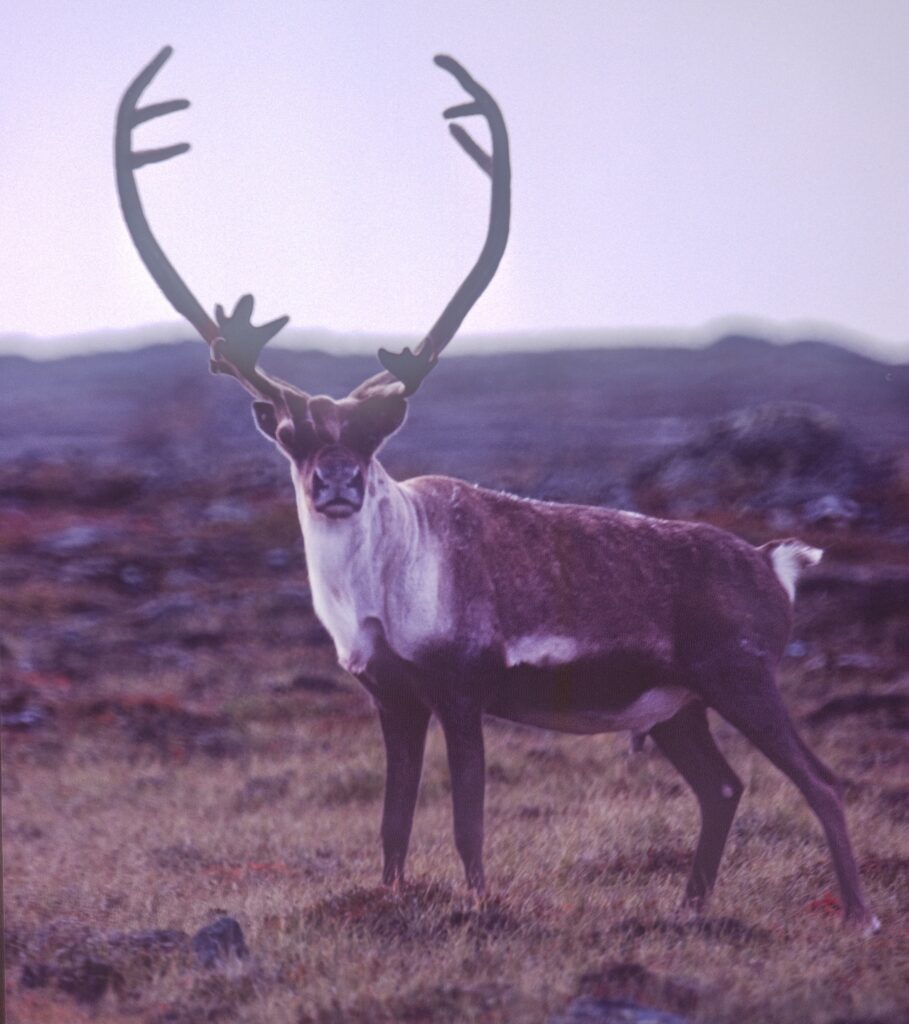
The two strategies however, have the same goal: avoid predation. Again, all caribou reproduce slowly. Since they can’t out-breed the predators, caribou have to stay away from them. The barren-ground caribou avoid predation by living in huge groups, and never staying in one place. Their main predator, wolves, have to stop following the herds to have their pups, often somewhere around treeline. The caribou keep on moving and give birth on a breeding ground high above treeline. While photos of the huge northern herds make you think that there are caribou everywhere, remember that they only briefly stay in any one place, and they may not come back to that same spot for many years.
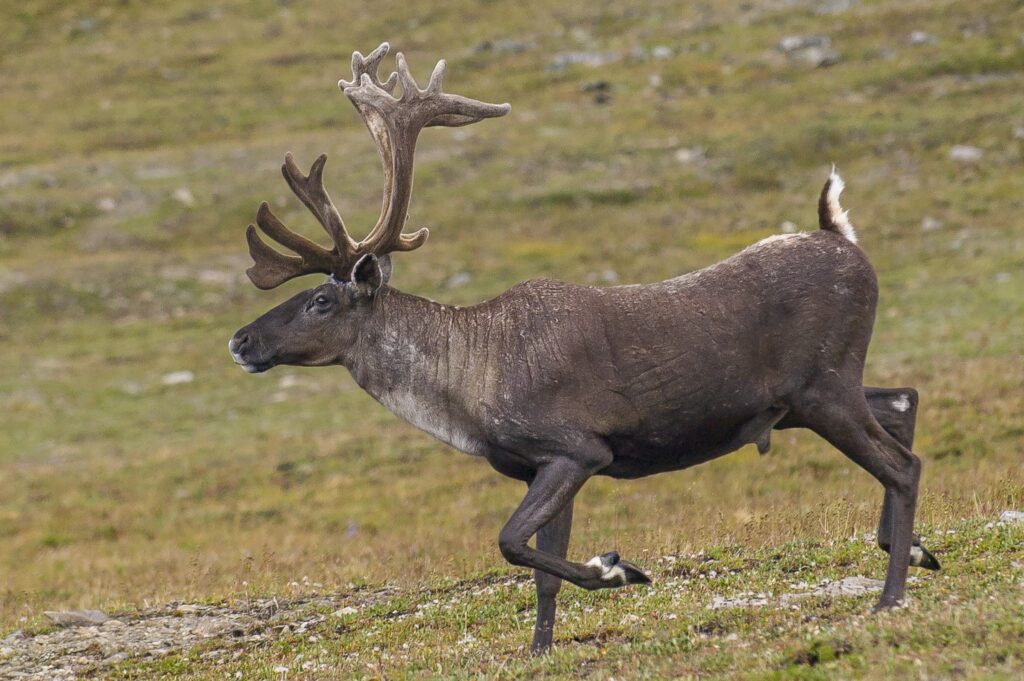
The woodland caribou (like Jasper’s) avoid predation in a completely different way. Instead of living in huge groups and always moving, they live in small groups and don’t move much. However, where they do hang out are areas which other prey species aren’t crazy about. Because there’s too much wolf food (elk, moose and deer) hanging out in the valleys, our caribou are generally near the mountain tops (mature forests and alpine tundra). And the same adaptations to the cold that enable barren-ground caribou to thrive on the arctic tundra enable our Jasper caribou to thrive in the alpine tundra.
Mark Bradley // info@thejasperlocal.com
This has been Part 1 of a two-part series on caribou. Stay tuned for Part 2 when Mark Bradley discusses Jasper’s woodland caribou and how different jurisdictions manage this endangered species.


